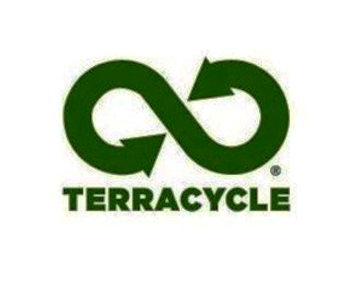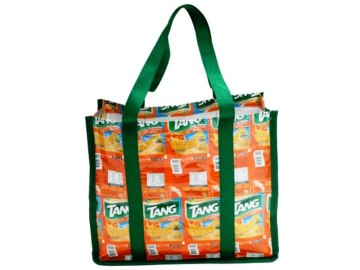Archivo de la etiqueta: Diseño Industrial
Biomímesis – Biomimética
Desde tiempos de antaño el ser humano se ha inspirado y ha aprendido de la naturaleza para la creación de muchos de los artefactos con los que hoy convivimos en nuestras actividades cotidianas. De ahí que resulte importante la Biomímesis o Biomimética, como herramienta fundamental en los proyectos de diseño (tal como la Ecología Industrial)
Pueden encontrar información básica en:
http://www.biomimicryinstitute.org/about-us/what-is-biomimicry.html
También hay un sinnúmero de papers como los siguientes:
Using descriptions of biological phenomena for idea generation
http://link.springer.com/article/10.1007/s00163-007-0041-y/fulltext.html
Abstraction of Biological Analogies for Design
http://www.sciencedirect.com/science/article/pii/S0007850607606581
Biologically inspired design
http://www.sciencedirect.com/science/article/pii/S0007850611002137
Finalmente, puede resultarles de interés este link de la National Geographic: http://ngm.nationalgeographic.com/2008/04/biomimetics/clark-photography
Obsolescencia Programada/Percibida
Hemos conversado sobre obsolescencia programada/percibida antes, y aquí hay un video fantástico en donde se comprende este concepto «desde el punto de vista de» un celular; entretenido y claro en el mensaje.
¡Gracias Nathalie Spittler (de la Global Network on Sustainable Lifestyles) por compartirlo!
Redes Globales – Sostenibilidad, Diseño y Emprendimiento
Hoy en día es importante cooperar y establecer redes de contacto: conceptos como networking, crowdfunding, crowdsourcing, entre otros, dan cuenta de la importancia que la colaboración está tomando cada vez más para el desarrollo de proyectos.
De ahí que resulten interesantes estas redes, alrededor de la sostenibilidad, la innovación, el emprendimiento y la cooperación; es posible registrarse:
Global Network on Sustainable Lifestyles: http://vision2050.net/
Global Network on Sustainable Innovation and Entrepreneurship: http://scaling-up.net/
Jovoto (Red de crowdsourcing alrededor de las disciplinas creativas): http://www.jovoto.com/clients
Sello «CE» (Conformité Européenne)
Buenas tardes,
¿Se han preguntado qué significan las letras CE (Conformité Européenne) en sus equipos electrónicos como celulares y computadores? Es una marca de la Comisión Europea para certificar que se cumple con los estándares de seguridad, salud y protección ambiental de la Unión Europea.
Acá está un link que puede resultarles útil sobre esta marca; además, allí se encuentran brochures con información para productores y consumidores, con la guía básica para obtener este sello.
http://ec.europa.eu/enterprise/policies/single-market-goods/cemarking/index_en.htm
Low-Impact Design Strategies (LIDS)
La Rueda LIDS puede ser muy útil como herramienta de diseño para comparar productos y conocer cuál puede ser mejor en términos de impactos ambientales (de acuerdo a distintos aspectos, usualmente 8 aspectos)
Encuentran información básica en: http://www.engin.umich.edu/labs/EAST/me589/ecodatabasefinal/design/lids/concepts.html e imágenes de la rueda en: http://www.disost.com/2012/07/herramientas-de-ecodiseno.HTML
De todos modos, es interesante saber que existe una metodología definida para gestión territorial urbana, desde el punto de vista ambiental y con una aproximación desde el enfoque del diseño. En la EPA encuentran información: http://water.epa.gov/polwaste/green/upload/lidnatl.pdf y http://cfpub.epa.gov/npdes/stormwater/menuofbmps/index.cfm?action=factsheet_results&view=specific&bmp=124
PROTEA – Upcycling/Cooperación
Buenas tardes!
Casi nunca les comparto noticias ambientales relacionadas a productos, porque para eso ya hay muchos blogs (incluyendo algunos que les he compartido)
Pero en este caso es interesante destacar lo que conversamos en muchas ocasiones: ¿cómo concibo un producto para que su ciclo de vida inicial dure más? Este objeto se concibió para cumplir su función, pero para adaptarse a una segunda función práctica después del primer uso programado. Bueno, hay empresas que ya han pensado en eso: http://inhabitat.com/protea-debuts-s-fetching-new-wine-bottle-thats-designed-to-be-upcycled/ y otro link de información sobre este proyecto: http://terlatowines.com/brands/south-africa/protea
Link a la página del diseñador que colaboró: http://markeisen.com/
Link a la información del origen de las uvas del vino que se embotella en este producto: http://www.proteaswines.co.uk/
Feliz semana!
Principios para la Sostenibilidad (The Hannover Principles)
Partiendo del artículo publicado en el portal de internet http://www.ecointeligencia.com, sobre los mandamientos del diseño sostenible (http://www.ecointeligencia.com/2012/11/10-mandamientos-diseno-sostenible/), temas que también nos apasionan acá en SostenibleDesign, les comparto las fuentes de información sobre estos principios (pueden consultar más en el libro de William McDonough y Michael Braungart, «The Hannover Principles. Design for sustainability«)
En el siguiente link de la firma de Arquitectura William McDonough + Partners, encuentran el resumen de los principios: http://www.mcdonough.com/speaking-writing/the-hannover-principles-design-for-sustainability/
En el siguiente link encuentran el texto original preparado para la «EXPO 2000.The World’s Fair. Hannover, Germany»: http://www.mcdonough.com/wp-content/uploads/2013/03/Hannover-Principles-1992.pdf
En el siguiente link van a la firma de innovación de los dos autores del libro mencionado arriba: http://www.mbdc.com/about-mbdc/overview/
Semana del Diseño – UPTC 2013
En el siguiente link encuentran la información del evento que se llevará a cabo del 14 al 17 de Mayo de 2013, en la Seccional Duitama de la Universidad Pedagógica y Tecnológica de Colombia.
Organizado por el Centro De Estudios De Diseño “CED” de la Escuela de Diseño Industrial de la universidad.
http://www.uptc.edu.co/eventos/2013/cf/csd/inf_general/index.html
Tiffany Threadgould (Entrevista), Chief Design Junkie de Terracycle

Imagen tomada del Fan Page de Facebook: https://www.facebook.com/TerraCycle.Argentina/photos_stream
Hello dear readers!
It is a pleasure to talk with you this time about one of the most prominent companies in the industry of Upcycling. As we have discussed before here on the blog, it is possible that the shorter definition of «Upcycling» actually comes from Terracycle (1): «Using every aspect of waste as value»
While some sources claim that the first time this concept was used was by Reiner Pilz in a publication of architecture, Terracycle has taken this concept to the next level through education programs, Brigades®, R&D, among other strategies, to create new products, within the framework of Inclusive Business and Social Innovation.
With operations in more tan 20 countries, and other new ones projected (including Colombia), Terracycle has succeeded in bringing together more than 28 million people around the world to collect waste, and it has made contributions of more than USD$ 3 million to charitable organizations. This has allowed Terracycle to get cooperation agreements with various manufacturers of consumer goods, from food industry to cleaning products.
Furthermore, with all the amount of waste collected TerraCycle has been able to develop a whole family of products available for sale, from handbags, to travel accessories, indoor and outdoor furniture and even clothes.

Imagen tomada del Fan Page de Facebook: https://www.facebook.com/TerraCycle.Argentina/photos_stream
It is precisely why, in the context of sustainable design, we invited Tiffany Threadgould, Chief Design Junkie of Terracycle, to tell us about this revolution (by the way, you may want to take a look at the book «Revolution in a Bottle: How TerraCycle Is Redefining Green Business » by Tom Szaky, CEO of TerraCycle)
You may learn more about this company on their website, including what products are available for sale and what and how their Brigades® operate. Also, for anyone interested in participating in Latin America, Terracycle has operations in Argentina, Mexico and Brazil and soon they will open in Colombia and Chile.
Let us see what Tiffany told us:
It is quite a pleasure and a fortune to have this opportunity with you, and we thank you for being with us. On the first place, we would love to know more about what you do in Terracycle, would you tell us something about you?
T.T.: I’m the head of the Design Department at TerraCycle. My team is responsible for all of the upcycled goods that come out of TerraCycle. We are responsible for all of the product prototypes, the interior design of all of our offices, creating specialty furniture and artwork for our brand partners, and just general upcycling goodness that comes from TerraCycle.
We also find very interesting how someone does create value from residues: in other words, what is there so significant in waste?
T.T.: The TerraCycle designers have learned to look at waste materials no longer as waste, but as raw materials for our next projects.
Talking about Design, how could a Designer get into this business? We would like to know how your relationship with Terracycle began.
T.T.: Prior to TerraCycle, I was working with waste materials as a designer. I received my Masters Degree in Industrial Design from Pratt Insittiute. My graduate Thesis was titled Trash Nouveau – the idea of reusing garbage for mass production purposes. I had also written several books on the subject. So when I discovered TerraCycle and realized that they were working with this idea and large companies in a big way, I got hired on the spot. I wasn’t really looking for a full time job, but the mentality of recycling and upcycling was so similar that I jumped at the opportunity. The other designers that work at TerraCycle also have a similar style of working with garbage.
Now that you are working in one of the most important companies in this industry, what is the most exciting and interesting thing about working in Design with valuable things considered waste by other people?
T.T.: We work with a lot of food packaging and flexible food wrapper material. We are always challenged and bring a lot of refreshing ideas when we have interesting materials and shapes to work with. We recently had shampoo bottles, old tents, and wine corks be materials that we are challenged to solve. We also have a separate technology team that focuses on recycling (breaking the material back down rather than reusing the material as-is). They recently discovered how to recycle cigarette butts. It’s a disgusting material, but we never say “no” to any kind of garbage. Dirty diapers are another one.
By the way, is there any “residue” you like the most? If you do, why? In the same way, do you have in mind a product, created by you with “residues”, you love the most? Could we know why?
T.T.: The residue or garbage that we use mostly is the flexible wrapper material. That has multiple plastics in it, so it’s not typically recycled in regular recycling programs. TerraCycle creates national recycling programs for any waste material that doesn’t have a solution. The projects that we’ve created that I really love are the projects in the office. They’re made from unique materials – for example we created a conference table out of an old bowling alley. And our carpet is Astroturf from a nearby soccer field.
Would you consider Design as a key factor in the competitiveness of Terracycle? In this case, how has Design helped Terracycle (and yourself) in making a difference in the Upcycling business, comparing to similar companies?
T.T.: Yes, design does make TerraCycle more competitive. TerraCycle has the unique benefit that we work with companies that sponser the collection programs. There is not really another company working in the same space as TerraCycle.
We have seen an increasing number of companies using residues for designing products, even here in Colombia (though there are not too many as successful as Terracycle) Nevertheless, how are you preparing for the increasing competition in this market?
T.T.: TerraCycle is trying to be first to market in many countries. We are in 20+ countries to date. We hope to be in Colombia soon 🙂
Do you currently hold some environmental certification, such as an Ecolabel, or the ISO 14001, or any similar? If you do, we would like to know which one(s) do you have, and if you would you recommend to get certificated in one in particular. If you do not, are you considering getting one?
T.T.: TerraCycle does have various certifications in many different countries. But in many cases the TerraCycle logo comes on packaging and is a certification in itself. It shows consumers that even if they can’t recycle their packaging in their regular recycling bin, there is a solution and they can send it in to TerraCycle.
(1) http://www.terracycle.com/en-US/pages/upcycling.html (May 7th, 2013)
